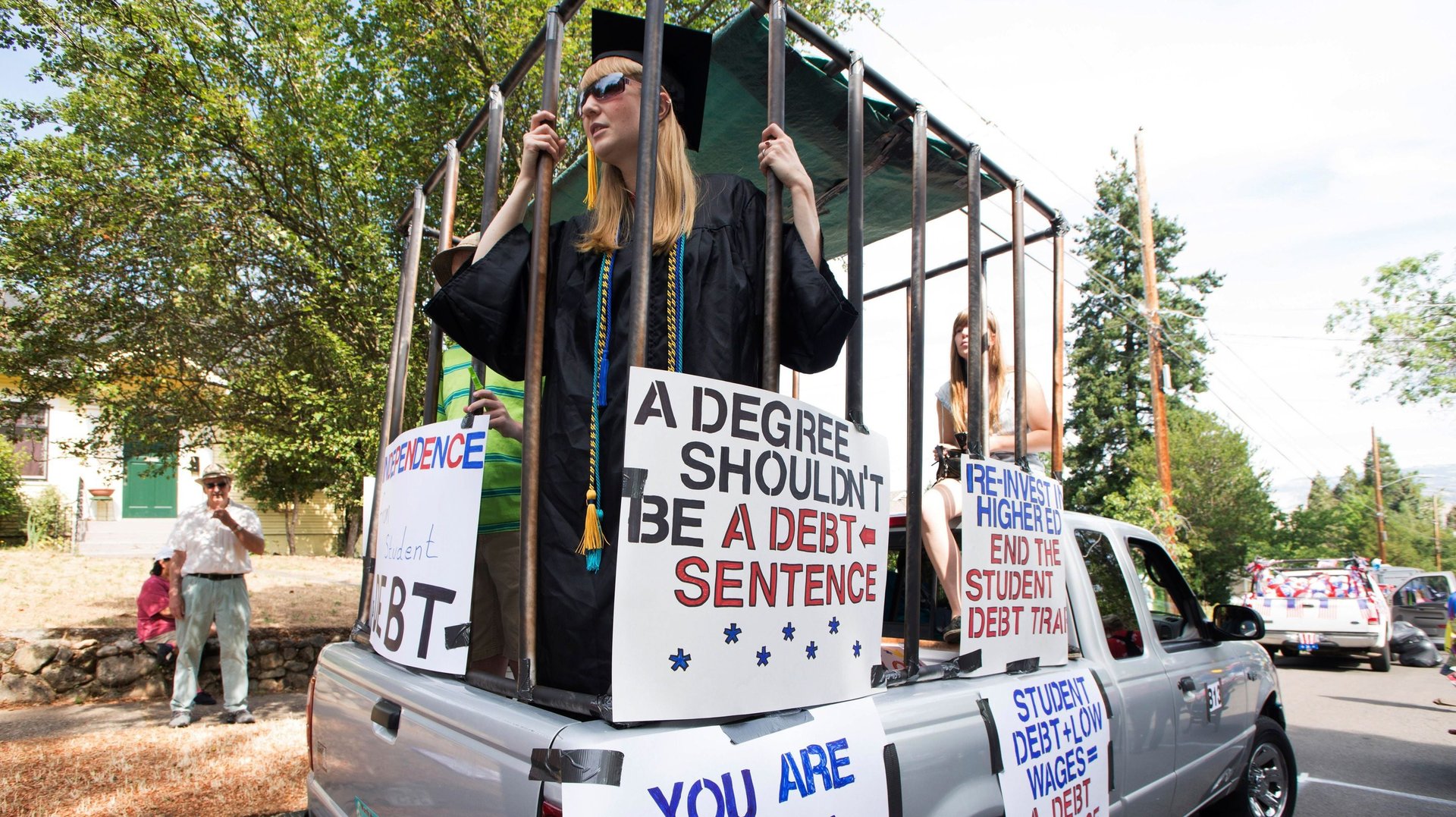The colossal US student-loan problem, in four charts
Donald Trump says he’s fixing the ballooning problem of US student debt. His administration is proposing ideas that include everything from eliminating the debt-forgiveness program for students who work in public service—as he did in his budget—to limiting borrowing amounts.


Donald Trump says he’s fixing the ballooning problem of US student debt. His administration is proposing ideas that include everything from eliminating the debt-forgiveness program for students who work in public service—as he did in his budget—to limiting borrowing amounts.
“I’ve always been very good with loans. I love loans. I love other people’s money,” he said, when he signed an executive order on March 21 calling for universities to be more transparent about students’ income prospects after graduation, among other measures.
It’s hard to say whether the administration’s ideas would work to reduce student debt, mostly because it hasn’t provided many details. (For example, how exactly would the federal government require universities to have “skin in the game” when it comes to student loans, as Trump suggested in his budget proposal?) Democratic candidates for president are presenting their own options to make college more affordable.
The scope of the problem is immense. Student debt now stands at nearly $1.5 trillion, more than what Americans owe on their cars and credit cards. It’s going to be extremely hard for the Trump administration to design policies to turn around current trends, despite his fondness for loans.
Here’s a look at the overall issue in charts:
It’s ever-growing
The increase in student debt is partly due to more students enrolling in college and staying there for longer. But higher tuition costs, which have far outpaced inflation, also mean a bigger share of students are now borrowing money to go to school than in the past.
Defaults are a big problem
It’s also becoming harder for students to pay off their loans. In recent years, the share of borrowers missing payments or flat-out defaulting remains high.
The balance of defaulted student loans now exceeds $120 billion.
Long-term loans
The share of borrowers 40 and older has also been growing. This is partly because it’s taking some people a lot longer to pay off their debt—and because students’ parents and grandparents are stepping in to help them pay for college, according to government data.